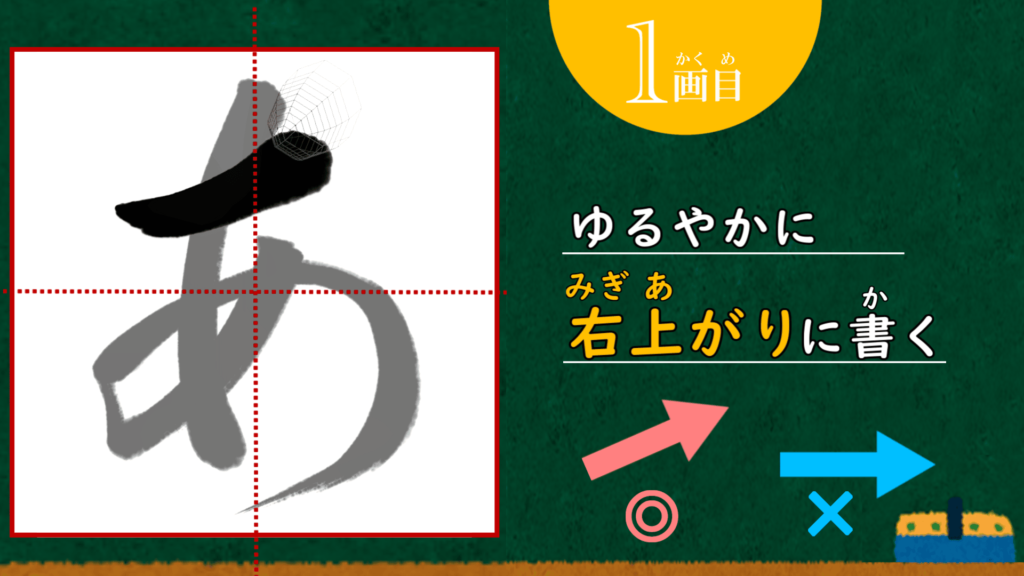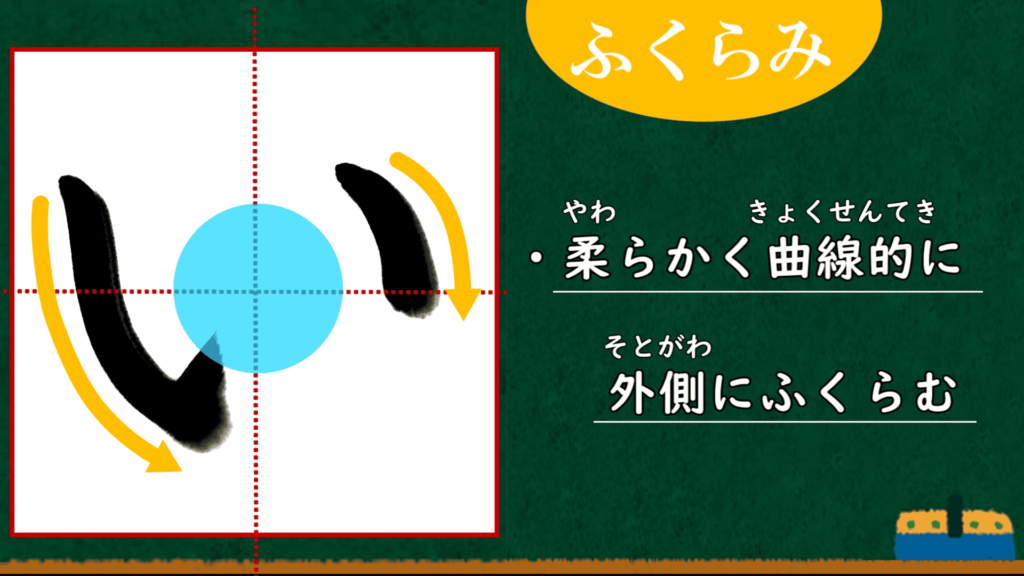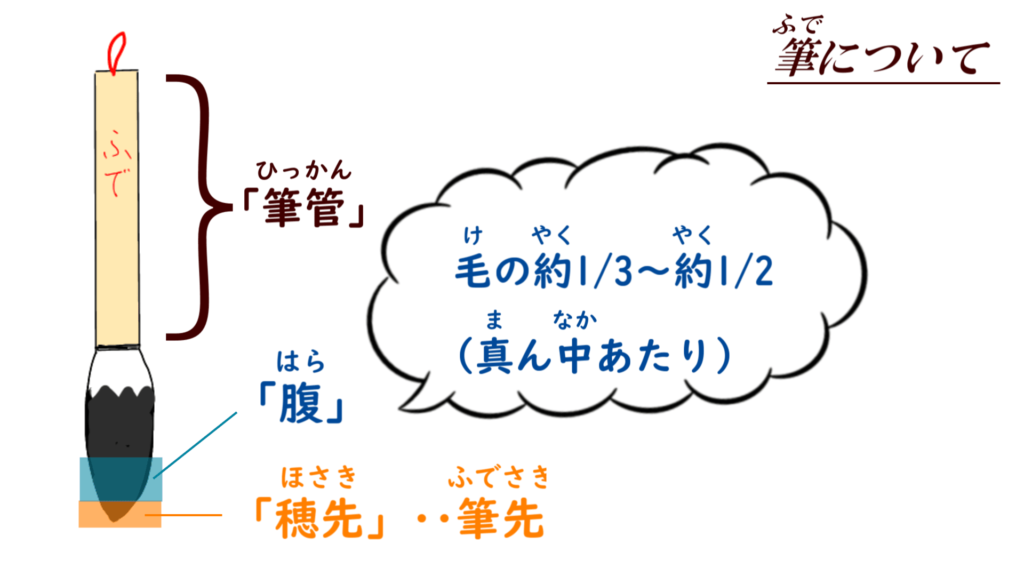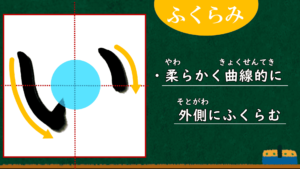【Difference between beginners and experts】How to write "う" in hiragana beautifully
Hi, I am "Teto".
This is Japanese calligraphy course that enables anyone to learn to write beautiful Japanese characters!
In this article, I will explain how to write the "う" in hiragana beautifully.
In the article on "あ", I explained the falling stroke(はらい), and in the article on "い", I explained the "brush vein"(筆脈) and the hook stroke(はね).
If you have mastered these, you can write "う" with relative ease.
If you have not yet read the explanations for "あ" and "い," please refer to them as well!
Also, please refer to the "う" explanation on Youtube as well!
Overview of ”う”
The "う" consists of two strokes.
You may tend to focus on writing the second stroke "bend"(曲がり) or "falling stroke"(はらい) well, but surprisingly, the first stroke "dot" is also very important!
As I will explain later, when writing dots, don't just put the brush down without thinking!
Knowing how to move the brush in details will bring you a lot closer to becoming an expert!
Also, by correctly extending the second fallong stroke, the outline of "う" will be beautifully vertical.
Please read the detailed explanation after understanding the outline of the "う"!
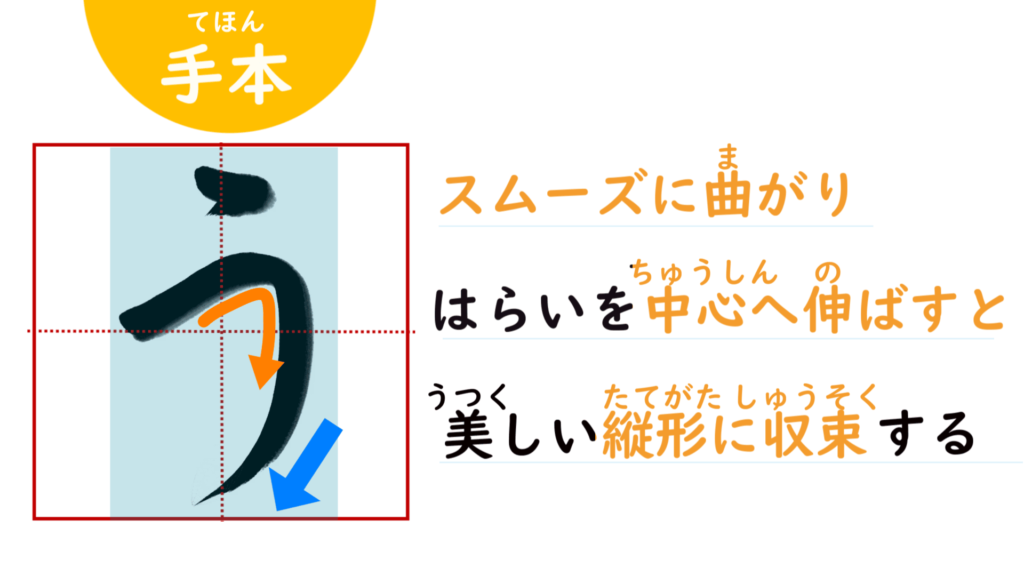
The first stroke『dot』(点)
Are you thinking, "Dots are just a brush stroke?”
Experienced calligraphers don't have such a simple way of writing.
I have summarized it in four images, so please take a look at them.
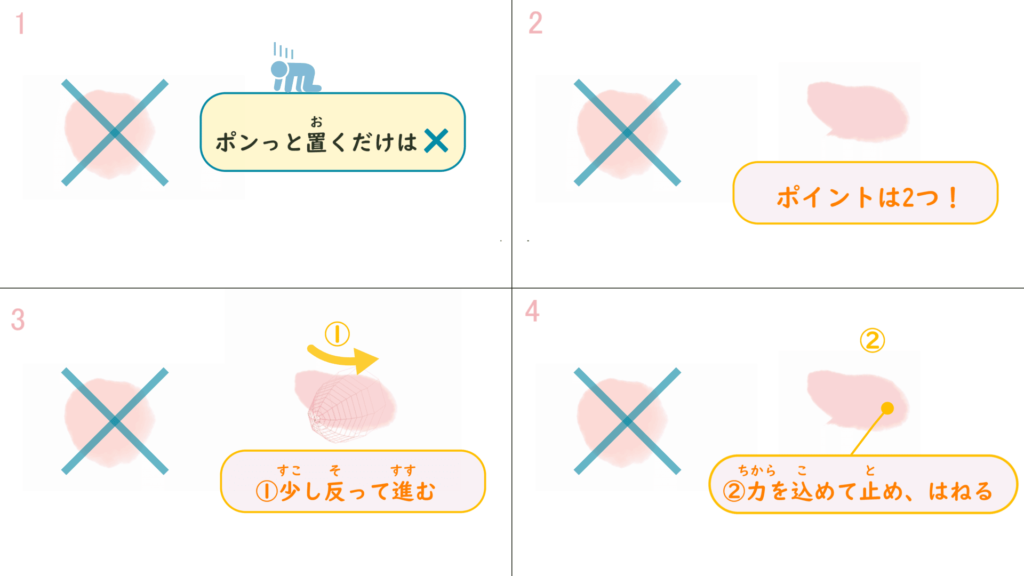
As shown in the image, the key is to move the brush forward in a slightly warped manner (not too long).
Move the brush forward in stages with more and more force, and then stop with more and more force.
Then, make a slight hook stroke.
The brush stroke should not be as strong as the first stroke of "い", but rather, it is important to stroke with the intention to connect to the second stroke of "い".
As mentioned in the explanation of "い", be aware of the brush vein!
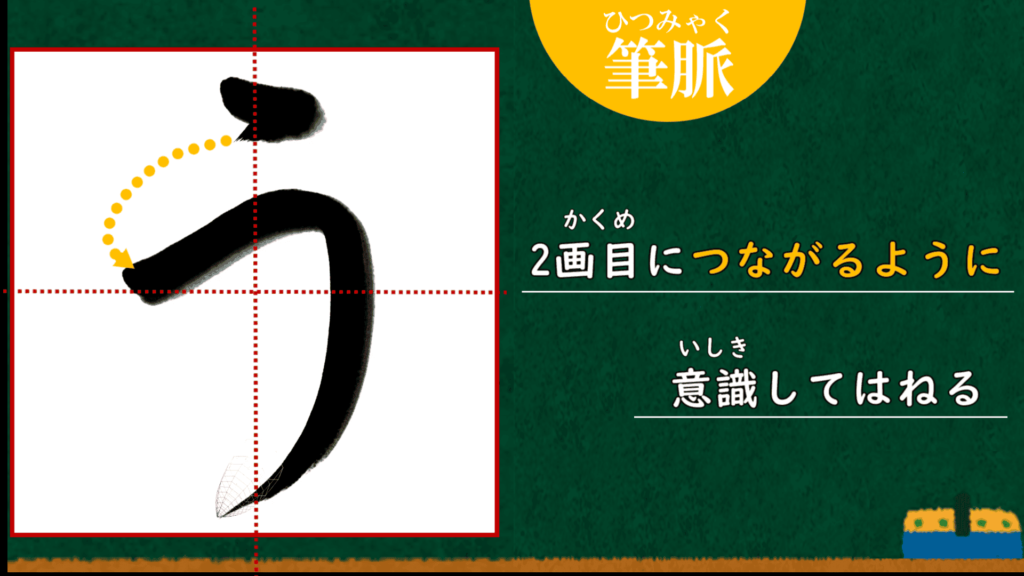
The second stroke『bend』(曲がり)
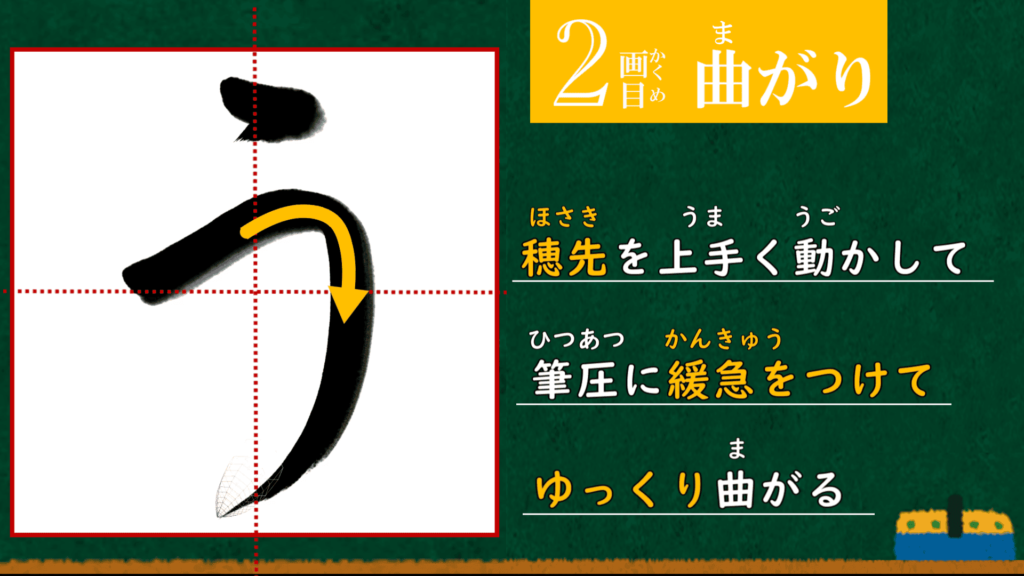
The "bend" is one of the most important brush strokes, so make sure you get it right!
The key is the movement of the brush tip.
For more information on brush tips, please refer to our brush description!
I have also compiled a four-frame explanation of bending, so please refer to that as well.
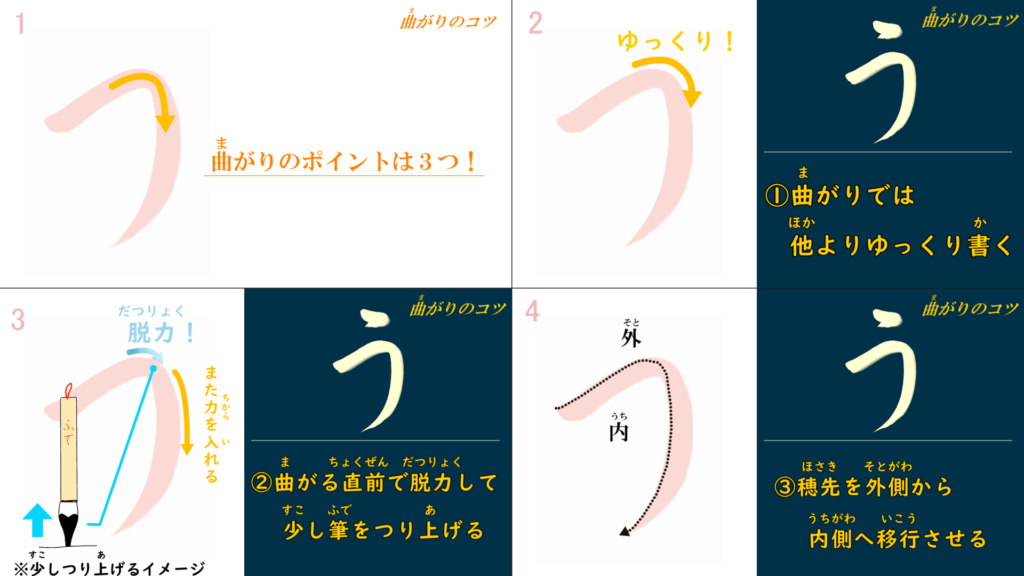
The most important thing in bending is "change of speed and force"
If the speed or pressure of the brush is monotonous, the bend will not be successful.
When approaching a turn, slow down.
Then, relax and lift the brush slightly to make a good bend.
When you bend in this way, the bend will be slightly thinner, and the line will be more supple and less angular.
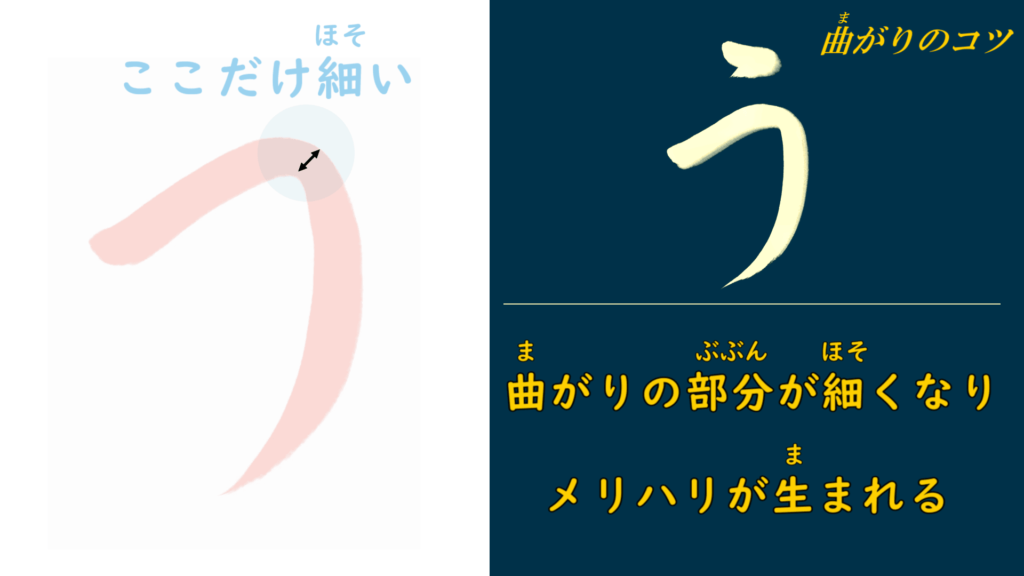
The shifting position of the brush tip is also very important.
At the start of the second stroke, the brush tip is facing outward.
On the other hand, at the bend, the brush tip shifts inward, and then proceeds to the falling stroke.
This transition of the brush tip allows the brush to move smoothly!
I mentioned the importance of the brush tip transition in the rotation(まるめ)of "あ".
The rotation of ”あ” and the bend of ”う” are quite similar in some respects, so please compare the two strokes!
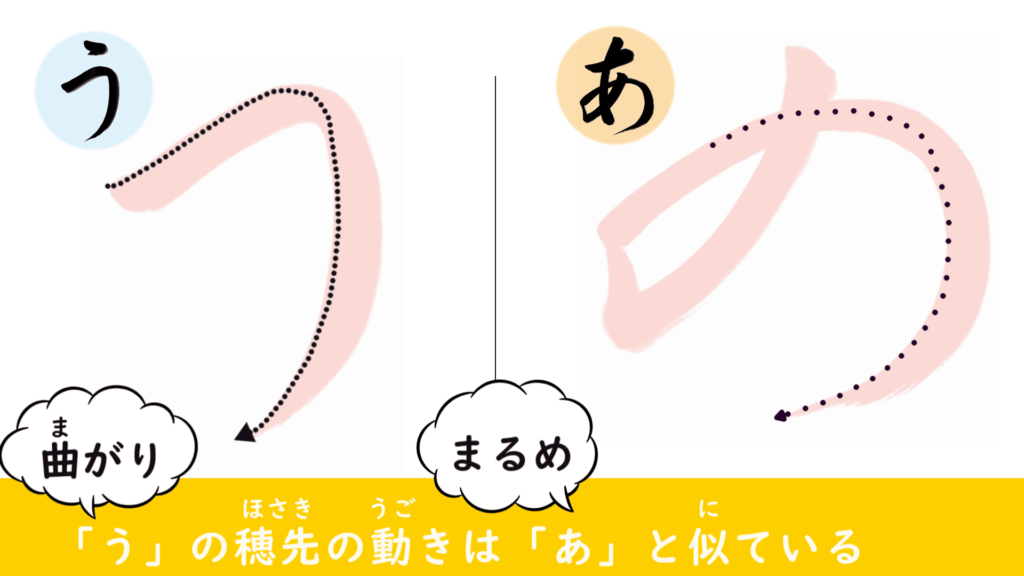
However, keep in mind that the bend of ”う” is quite steep.
The key point is to write it as if it were a sharp curve, rather than a large circular turn like the "あ".
The transition of the position of the brush tip should also be very compact.
End of the second stroke
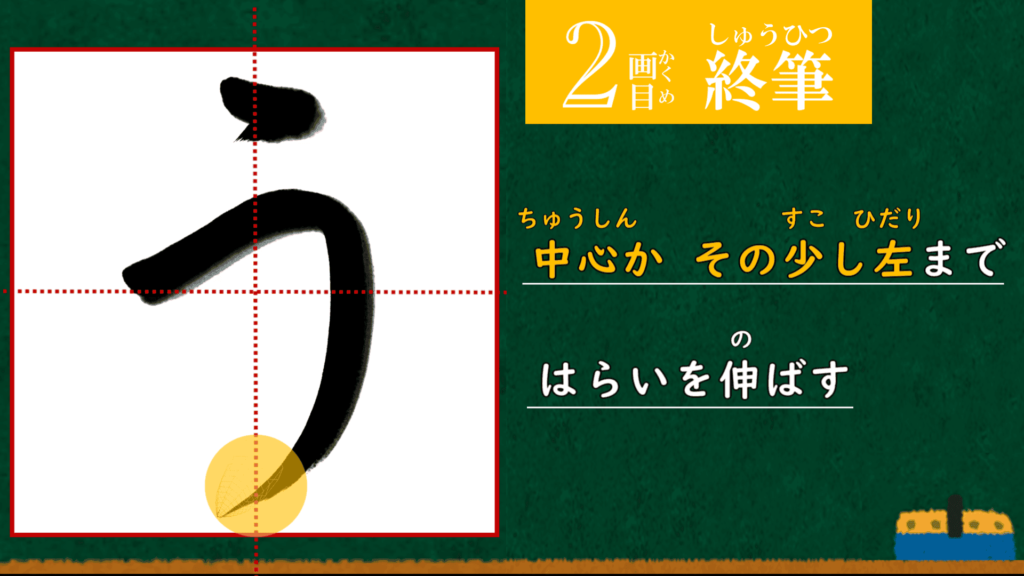
The first thing to do is to extend the falling stroke firmly all the way to the bottom.
Then, try to extend it all the way to the center!
(I think it is OK to go a little beyond the center)
If you extend the harai firmly, ”い” will be beautifully vertical, so do not lose your attention until the very end!
The skill to write a beautiful falling stroke is described in the explanation of "あ".
Please refer to that as well!
That's all for the "う" explanation.
Finally, if you are interested in learning more about calligraphy after reading my explanation, I highly recommend that you visit a calligraphy class.

